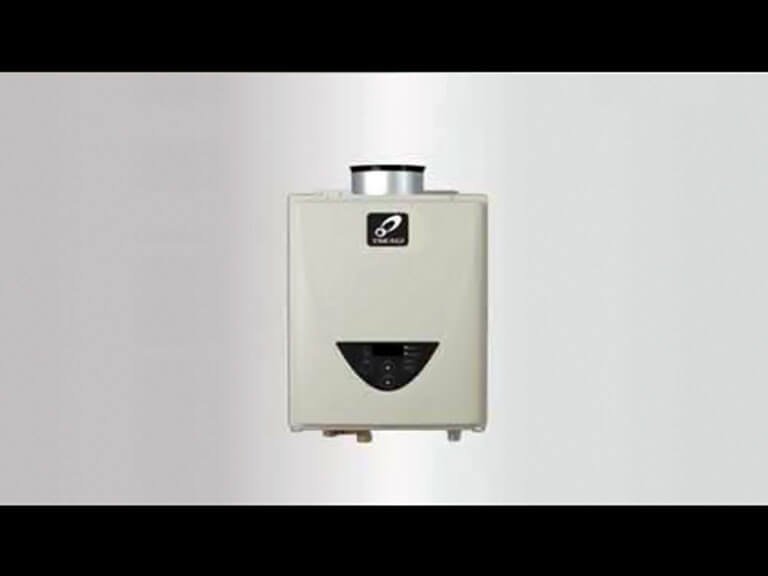Takagi Tankless Water Heater Problems: Quick Fixes!
Takagi tankless water heater problems often include insufficient hot water, error codes, and fluctuating temperatures. Regular maintenance and troubleshooting can resolve many of these issues.
Tankless water heaters provide an efficient and reliable source of hot water. Takagi is a popular choice among homeowners for its energy-saving features and compact design. Yet, like any appliance, it can encounter problems over time. Users may experience issues such as inconsistent temperatures, low flow rates, or even error messages on the display.
These challenges can stem from various factors, including mineral buildup, improper installation, or insufficient gas supply. Understanding common problems and their solutions can help you maintain optimal performance and ensure a steady supply of hot water for your household needs.
Introduction To Takagi Tankless Water Heaters

Takagi tankless water heaters are popular for many homes. They provide hot water on demand. This means you never run out of hot water. Efficiency and space-saving features make them a great choice.
Popularity And Efficiency
Takagi tankless water heaters have gained a strong following. Homeowners appreciate their energy efficiency.
- They heat water only as needed.
- Lower energy bills are a major benefit.
- Longer lifespan compared to traditional heaters.
These heaters can save space in your home. They are compact and easy to install. Many models are suitable for both indoor and outdoor use.
Common Misconceptions
Many myths surround tankless water heaters. Understanding these can help you make an informed choice.
- Cost: Some think they are too expensive. Initial costs are higher, but savings add up over time.
- Flow Rate: People believe they can’t supply enough hot water. Proper sizing can ensure enough hot water for your needs.
- Maintenance: Some assume they require extensive maintenance. Regular flushing is simple and keeps them running well.
Knowing these misconceptions helps you choose wisely. Takagi tankless water heaters offer many benefits.
Ignition Failures
Ignition failures in Takagi tankless water heaters can disrupt hot water supply. These failures often occur due to various reasons. Identifying the cause is essential for quick repairs. Let’s explore troubleshooting steps and preventive measures to fix and avoid these issues.
Troubleshooting Steps
Follow these steps to diagnose ignition failures:
- Check Power Supply: Ensure the unit is plugged in. Look for tripped breakers.
- Inspect Gas Supply: Confirm that gas is flowing to the heater. Check for leaks.
- Examine the Ignition Sensor: Clean or replace the ignition sensor if necessary.
- Look at Error Codes: Refer to the user manual for specific error codes.
- Reset the System: Turn off the heater, wait a few minutes, and restart.
Preventive Measures
Taking preventive measures can help avoid ignition failures:
- Regular Maintenance: Schedule annual maintenance with a qualified technician.
- Clean Filters: Keep air and water filters clean and free from debris.
- Monitor Gas Pressure: Ensure gas pressure is within the recommended range.
- Inspect Venting: Check that vent pipes are clear and not blocked.
- Install Surge Protectors: Protect against power surges that may cause failures.
| Problem | Solution |
|---|---|
| Power Issues | Check and reset circuit breakers. |
| Gas Supply Problems | Inspect gas lines for leaks. |
| Dirty Ignition Sensor | Clean or replace the sensor. |
Fluctuating Water Temperatures
Fluctuating water temperatures can be frustrating. They make showering or washing dishes uncomfortable. You expect hot water, but it varies. This issue often arises with Takagi tankless water heaters. Understanding the causes helps in finding solutions.
Identifying Causes
Several factors can cause fluctuating water temperatures in Takagi tankless water heaters. Here are the common ones:
- Incorrect Temperature Setting: The thermostat may not be set properly.
- Water Flow Rate: Low flow rates can cause temperature drops.
- Clogged Filters: Dirt and debris can block water flow.
- Gas Supply Issues: Inconsistent gas supply can affect heating.
- Electrical Problems: Faulty wiring may disrupt heater operation.
Diy Temperature Stability Fixes
Fixing fluctuating temperatures can be simple. Here are some DIY steps to try:
- Check the Thermostat: Ensure it’s set to your desired temperature.
- Increase Flow Rate: Open more taps to boost water flow.
- Clean Filters: Remove and clean filters regularly.
- Inspect Gas Line: Ensure it is clear and connected properly.
- Examine Wiring: Look for any visible damage or loose connections.
Remember to turn off the heater before performing any maintenance. Safety first!
Mineral Buildup And Maintenance
Mineral buildup in Takagi tankless water heaters is common. Hard water leads to scale accumulation. This affects performance and efficiency. Regular maintenance helps prevent serious issues.
Signs Of Scale Accumulation
Recognizing scale buildup early can save time and money. Look for these signs:
- Reduced water flow: Notice a drop in water pressure.
- Fluctuating temperatures: Water may not stay hot.
- Strange noises: Hear popping or banging sounds.
- Longer heating times: Water takes longer to heat up.
- Discolored water: Water may appear cloudy or rusty.
Descale Procedures
Descaling your Takagi water heater is essential for maintenance. Follow these steps:
- Turn off the power and water supply.
- Connect a garden hose to the service valves.
- Place the other end of the hose in a bucket.
- Prepare a descaling solution. Use vinegar or a commercial descaler.
- Open the service valves slowly.
- Let the solution flow for 30 minutes.
- Flush the system with clean water.
- Close service valves and reconnect everything.
- Turn the power and water supply back on.
Regular descaling extends the lifespan of your heater. Aim for at least once a year.
Error Codes And Meanings
Takagi tankless water heaters display error codes to indicate issues. Understanding these codes helps in diagnosing problems quickly. Each code points to a specific malfunction. Knowing what they mean can save time and money.
Common Takagi Error Messages
| Error Code | Meaning |
|---|---|
| 01 | Flame failure detected. |
| 02 | Overheat protection activated. |
| 03 | Water temperature sensor issue. |
| 04 | Gas supply problem. |
| 05 | Exhaust temperature too high. |
These error codes help identify problems quickly. Each code indicates a specific issue. For example, code 01 shows a flame failure. Code 02 means the unit overheated. Recognizing these codes can guide your troubleshooting process.
Resetting The System
Resetting your Takagi water heater can resolve many errors. Follow these steps to reset:
- Turn off the power supply to the unit.
- Wait for at least 10 seconds.
- Turn the power back on.
- Check if the error code disappears.
After resetting, monitor the unit. If the error code returns, further investigation may be necessary. Always consult the user manual for detailed instructions. Keeping the heater in good condition prevents most errors.
Water Flow Issues
Water flow issues can be frustrating. Takagi tankless water heaters may face these problems. Understanding the causes helps in finding solutions. Let’s explore how to detect and improve water flow.
Detecting Low Flow Problems
Low water flow can lead to inconsistent hot water supply. Here are some signs of low flow:
- Weak water pressure from faucets.
- Inconsistent hot water temperature.
- Long wait for hot water to arrive.
To identify the problem:
- Check the water flow rate. Use a bucket to measure.
- Inspect all faucets and showers for pressure issues.
- Look for leaks in the plumbing system.
Improving Water Flow
Improving water flow enhances your heating experience. Here are effective methods:
| Method | Description |
|---|---|
| Clean Filters | Remove and clean filters regularly to prevent clogs. |
| Adjust Water Pressure | Ensure the water pressure meets the heater’s requirements. |
| Check Pipe Size | Use the correct pipe size for optimal flow. |
| Insulate Pipes | Insulate pipes to prevent heat loss. |
Following these steps can restore proper water flow. Regular maintenance is key to avoiding problems.
Exhaust And Ventilation Concerns
Takagi tankless water heaters are efficient. They need proper exhaust and ventilation. Poor ventilation can lead to serious problems. These problems may affect safety and performance.
Proper Venting Techniques
Proper venting is crucial for safety. Here are some key techniques:
- Use the right venting materials. Stainless steel is a great option.
- Ensure a proper slope in the venting pipes. This allows condensation to drain.
- Install the vent system according to local codes. This ensures compliance.
- Keep vent pipes short and direct. This improves efficiency.
Addressing Blockage And Safety
Blockages can cause dangerous situations. Regular maintenance helps prevent these issues. Here are some tips:
- Inspect venting systems regularly. Look for debris or damage.
- Clean the vent pipes at least once a year. This avoids buildup.
- Check for proper airflow. Ensure nothing blocks the vents.
- Install a carbon monoxide detector. This adds an extra safety layer.
| Issue | Solution |
|---|---|
| Blocked Vent | Clear debris and clean regularly. |
| Poor Airflow | Check for obstructions and adjust venting. |
| Improper Materials | Use approved venting materials for installation. |
Electrical Complications
Electrical problems can disrupt the performance of your Takagi tankless water heater. These issues can lead to inconsistent hot water supply. Understanding these complications helps ensure smooth operation.
Power Supply Checks
Start with basic power supply checks. Follow these steps:
- Verify the unit is plugged in.
- Check the circuit breaker for tripped switches.
- Inspect the power cord for damage.
- Ensure proper voltage supply as specified in the manual.
Use a multimeter to test the voltage. The voltage should match the requirements. If the voltage is low, it may affect performance.
Electrical Connection Fixes
Next, address any faulty electrical connections. Here are common fixes:
- Check for loose wires.
- Repair any corroded connections.
- Replace damaged connectors.
Ensure all connections are tight and secure. This prevents future electrical issues.
For complex problems, consult a certified electrician. They can provide expert solutions. Avoid DIY repairs if unsure.
Professional Help Vs. Diy
Takagi tankless water heaters are efficient and reliable. Yet, they can face issues. Homeowners often debate between seeking professional help or tackling repairs themselves. Understanding when to call a technician is crucial. Some problems require expert skills, while others can be managed at home.
When To Call A Technician
Certain signs indicate you need professional help. Ignoring them may lead to bigger problems. Here are key indicators:
- No hot water at all.
- Frequent error codes appearing on the display.
- Leaks or water pooling around the unit.
- Strange noises during operation.
- Inconsistent water temperature.
These issues often need a trained technician. They can diagnose and fix problems quickly. This saves time and prevents further damage.
Resources For Diy Enthusiasts
Many homeowners enjoy fixing things themselves. If you’re one of them, consider these resources:
| Resource Type | Description |
|---|---|
| Online Tutorials | Step-by-step videos on YouTube. |
| User Manuals | Check the Takagi manual for troubleshooting. |
| Forums | Join DIY forums for tips and advice. |
| Repair Kits | Purchase kits for common issues. |
Before starting any repair, assess your skills. Safety is crucial. Always turn off the water and power before any work.
Ensuring Longevity Of Your Takagi Unit
To keep your Takagi Tankless Water Heater running well, focus on maintenance. Regular care prevents issues and extends its life. Follow these tips for optimal performance.
Regular Maintenance Tips
- Flush the System: Clean the unit every 6 to 12 months. This removes mineral buildup.
- Check Filters: Inspect and clean filters regularly. Dirty filters can block water flow.
- Inspect Venting: Ensure proper venting. Check for blockages or damage.
- Monitor Temperature: Set the temperature to 120°F. This helps prevent overheating.
- Test Pressure Relief Valve: Test this valve once a year. It ensures safety and proper function.
Warranty And Support
Your Takagi Water Heater comes with a warranty. This warranty covers parts for a specific period. Always keep your purchase receipt. Register the unit for full benefits.
For support, contact Takagi’s customer service. They provide help with:
- Installation questions
- Maintenance advice
- Repair guidance
Check the official website for updates. Online resources offer manuals and troubleshooting tips.
Frequently Asked Questions
What Are Common Issues With Takagi Water Heaters?
Common issues include inconsistent water temperature, error codes, and water leaks.
How To Fix Takagi Error Codes?
Refer to the user manual for specific error codes and follow troubleshooting steps provided.
Why Is My Takagi Heater Not Heating?
Possible causes include gas supply issues, blocked vents, or a malfunctioning thermostat.
How To Maintain A Takagi Tankless Water Heater?
Regularly clean the filter, flush the system annually, and check for leaks.
Can I Install A Takagi Water Heater Myself?
Professional installation is recommended to ensure safety and compliance with local codes.
Conclusion
Experiencing issues with your Takagi tankless water heater can be frustrating. Understanding common problems and their solutions is essential for efficient operation. Regular maintenance and timely repairs can extend the unit’s lifespan. Stay informed to enjoy reliable hot water and avoid disruptions in your daily routine.
Trust your instincts and seek professional help when needed.






